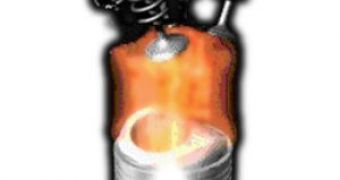Currently available internal combustion engines must achieve ignition in their cylinders to create combustion. Typically engines use either a spark ignition (SI) method or a compression ignition (CI) system.
So far, no engine could switch from one ignition type to the other, which is what gave the current gasoline/diesel distinction of the engines and the cars they're used in. But a new engineering advance from the MIT may soon change all that.
A team of scientists successfully demonstrated how common spark-ignition automobile engines can, under certain driving conditions, switch to a spark-free operating mode that is more fuel-efficient and just as clean.
The MIT team presented their latest results on July 23 at the Japan Society of Automotive Engineers (JSAE)/Society of Automotive Engineers (SAE) 2007 International Fuel and Lubricants Meeting. There, they presented their idea of a homogeneous charge compression ignition (HCCI).
A variation of the internal combustion engine, the HCCI uses well mixed fuel and oxidizer (typically air), which are compressed to the point of auto-ignition. The piston compresses air, like in a regular engine, until spontaneous combustion occurs.
The most important feature of this engine is the fact that combustion occurs simultaneously at many locations throughout the combustion chamber, which gives the engine a great advantage over the traditional ones.
Fuel in classical engines must burn hot to ensure that the flame spreads rapidly through the combustion chamber before a new "charge" enters. By eliminating this need, the HCCI engine escapes the constraint of quickly having to spread flame, since combustion occurs throughout the combustion chamber.
The beneficial results are more than obvious, as combustion temperatures can be lowered and the emissions of nitrogen pollutants become negligible. Also, fuel consumption is greatly reduced, since fuel burns completely and much more efficiently throughout the engine.
This mode-switching capability could appear in commercial applications within a few years. The result of switching the engine from a spark one to a spark-free one can improve fuel economy by several miles per gallon in millions of new cars each year.

 14 DAY TRIAL //
14 DAY TRIAL //